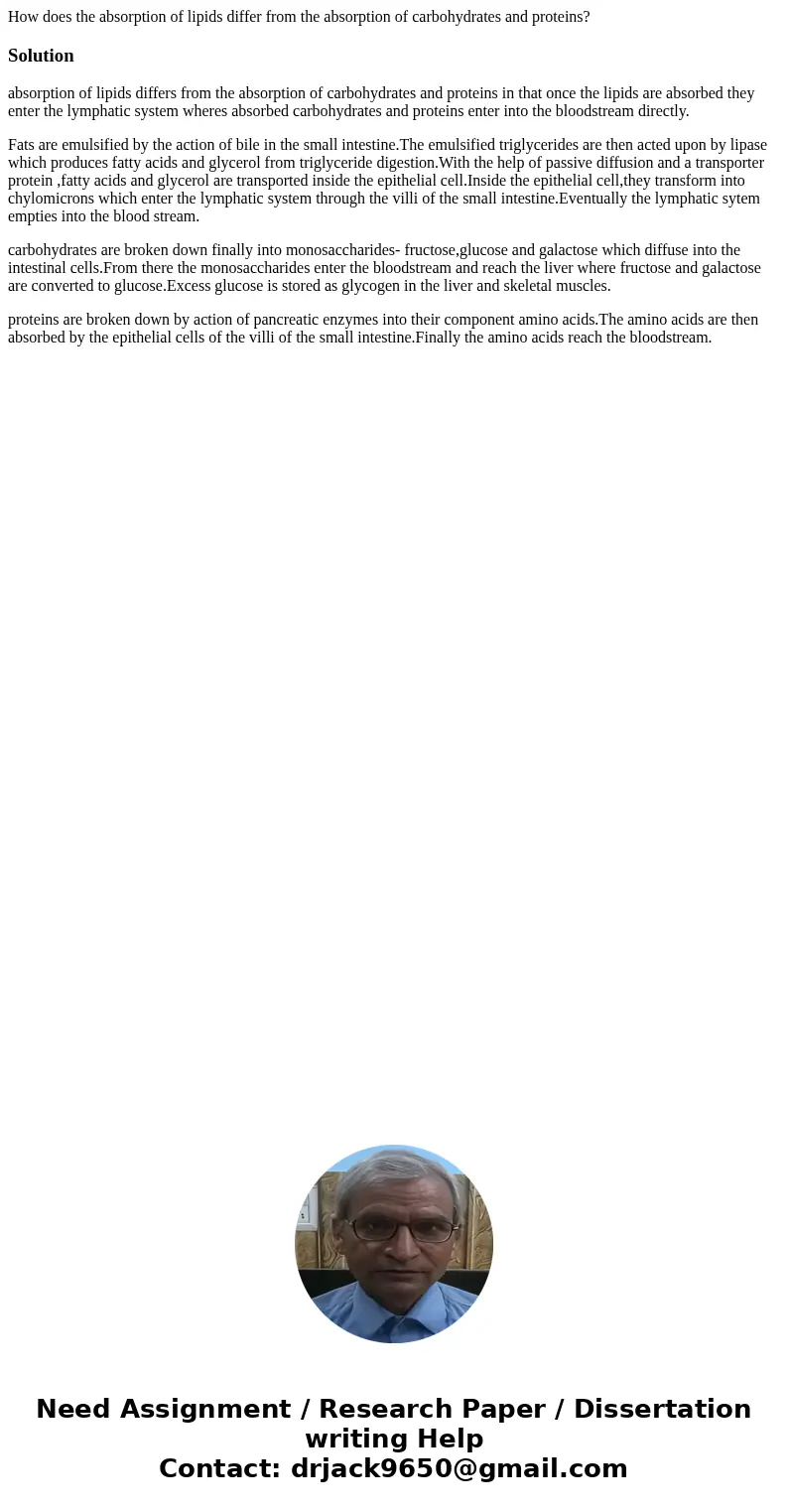How does the absorption of lipids differ from the absorption
Solution
absorption of lipids differs from the absorption of carbohydrates and proteins in that once the lipids are absorbed they enter the lymphatic system wheres absorbed carbohydrates and proteins enter into the bloodstream directly.
Fats are emulsified by the action of bile in the small intestine.The emulsified triglycerides are then acted upon by lipase which produces fatty acids and glycerol from triglyceride digestion.With the help of passive diffusion and a transporter protein ,fatty acids and glycerol are transported inside the epithelial cell.Inside the epithelial cell,they transform into chylomicrons which enter the lymphatic system through the villi of the small intestine.Eventually the lymphatic sytem empties into the blood stream.
carbohydrates are broken down finally into monosaccharides- fructose,glucose and galactose which diffuse into the intestinal cells.From there the monosaccharides enter the bloodstream and reach the liver where fructose and galactose are converted to glucose.Excess glucose is stored as glycogen in the liver and skeletal muscles.
proteins are broken down by action of pancreatic enzymes into their component amino acids.The amino acids are then absorbed by the epithelial cells of the villi of the small intestine.Finally the amino acids reach the bloodstream.

 Homework Sourse
Homework Sourse